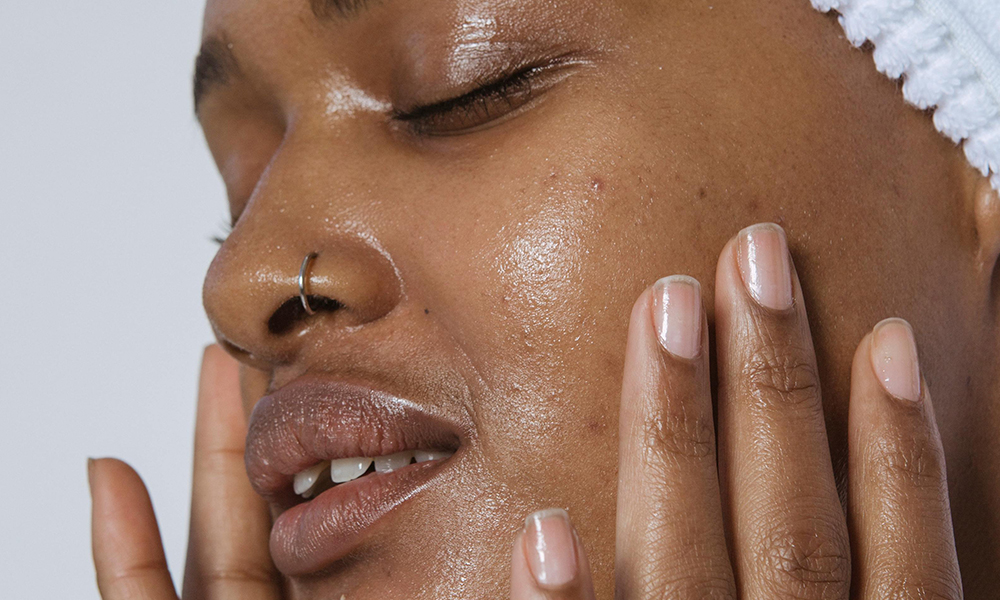Ask A Dermatologist: Why Are Sunscreen Filters So Important?

Link to share article here:
Ingredient Deep Dive: Vitamin E
Another skincare staple that slips under the radar: vitamin E. This unsung hero nourishes and protects the skin, and has more benefits than you’d think. Get to know vitamin E, right here on The Dose.
What is Vitamin E and who can use it?
Vitamin E is an oil-soluble antioxidant and an everyday hero when it comes to skincare.
Normally, the body produces vitamin E through sebum, a naturally oily substance produced through the skin’s pores. In the right balance, sebum helps keep the skin conditioned and prevents dryness.
Vitamin E is suited to all skin types. If you have particularly dry skin, vitamin E can help counteract a lack of sebum and make skin feel more nourished and hydrated.
If your skin is excessively oily or hyper-sensitive then vitamin E is most likely to be well tolerated and deliver best results as part of a blended formula rather than if applied as single-ingredient skincare.
In your diet, vitamin E can be found in nuts and seeds.
Vitamin E is an oil-soluble antioxidant and an everyday hero when it comes to skincare.
The science behind vitamin E
Vitamin E is commonly known as tocopherol (you might see this word on the ingredients list of your fave skincare) and it’s the most widely used form of alpha-tocopherol acetate.
Tocopherol and its commonly used forms are oils, so if used topically as a single ingredient, it may feel sticky on the skin. This skin-feel can be negated by using products that contain vitamin E blended with other skincare ingredients.
What does vitamin E do?
You’ll find vitamin E in huge amounts of skincare products. Used topically, not only does it protect from environmental damage, it soothes and moisturises irritated skin. For skin that’s a bit dry, it’s hydrating and protective.
Vitamin E has been shown in studies to reduce the number of sunburn cells and limit the potential damage associated with UVB radiation from sunlight. Vitamin E can also help tackle photodamage and can reduce redness and inflammation.
Vitamin E is barrier-strengthening and puts the brakes on free radical damage to collagen that can contribute to dry skin, signs of ageing, development of dark spots and damage to your skin’s DNA.
It tackles environmental aggressors and the effect of everyday pollution on the skin. Vitamin E also helps soothe redness associated with acne scarring.
Vitamin E has been shown in studies to reduce the number of sunburn cells and limit the potential damage associated with UVB radiation from sunlight.
What’s the difference between vitamin E and vitamin C?
Let’s start with a few similarities. Like vitamin E, vitamin C is already naturally occurring in your skin. Vitamin C is also known as ascorbic acid and like Vitamin E, it’s an antioxidant that helps repair and protect body tissues.
The main difference between vitamin C and vitamin E is that vitamin C is a water-soluble vitamin whereas vitamin E is soluble in fat.
Using vitamin E and vitamin C together
A lot of daytime routine products combine vitamin E with fellow antioxidant vitamin C. Why? Because using Vitamin E and C together can boost their effectiveness.
Vitamin C can be unstable on its own – meaning it can separate from the rest of the product, or change colour and texture. An addition of vitamin E can negate this because oil-soluble vitamin E keeps the formula balanced. It also helps to preserve the photoprotective efficacy of the product.
How to use vitamin E in your skincare routine
Use vitamin E under daily moisturiser or in your sunscreen to negate effects of sun damage and pollution.
You might find that the products already in your routine are enhanced with vitamin E – it’s soothing, hydrating and generally well-tolerated on most skin types. Although, you may experience slight irritation if your skin is sensitive and you apply vitamin E directly.
Applied topically as directed, vitamin E is also pregnancy-safe.
I have oily skin, can I use vitamin E?
Although vitamin E is well-tolerated by most skin types, pure vitamin E applied topically can potentially clog pores. If your skin is oily, you can still get the antioxidant benefits of vitamin E if it’s blended as part of a balanced skincare formula.
Using fewer products with smarter, blended formulas is the key to getting the best from your skincare here.
Can I use vitamin E alongside tretinoin in my routine?
Yes. Vitamin E can be used alongside retinol and the more potent retinoid, tretinoin.
Dermatologists may recommend that tretinoin is used as a part of an evening routine, and vitamin E alongside this can soothe, hydrate and reduce inflammation associated with skin purging.
Vitamin E can be used alongside retinol and the more potent retinoid, tretinoin.
Skin + Me’s Daily Doser base cream is formulated with added vitamin E. Rest assured, if your personalised treatment does contain tretinoin, we’ve done the hard work for you.
Vitamin E and sunscreen
A good SPF 30+ sunscreen when used as part of a protective daily routine, is skincare advice that every dermatologist will agree on.
You may find that your sunscreen is formulated with additional supportive antioxidants, vitamin E and/or C. This dynamic duo doubles up to reduce the skin damage associated with photoaging and pollution. Win win – vitamin E is the soothing skincare player everyone wants on their team.
New to Skin + Me? Get your first month of personalised skincare for £4.99 with promo code DOSE – complete our quick consultation here.
Looking for a routine refresh? Add the Dream Routine to your Skin + Me subscription.
In need of a restock? Head to The Skincare Shop for one-off purchases of your Routine Essentials.



